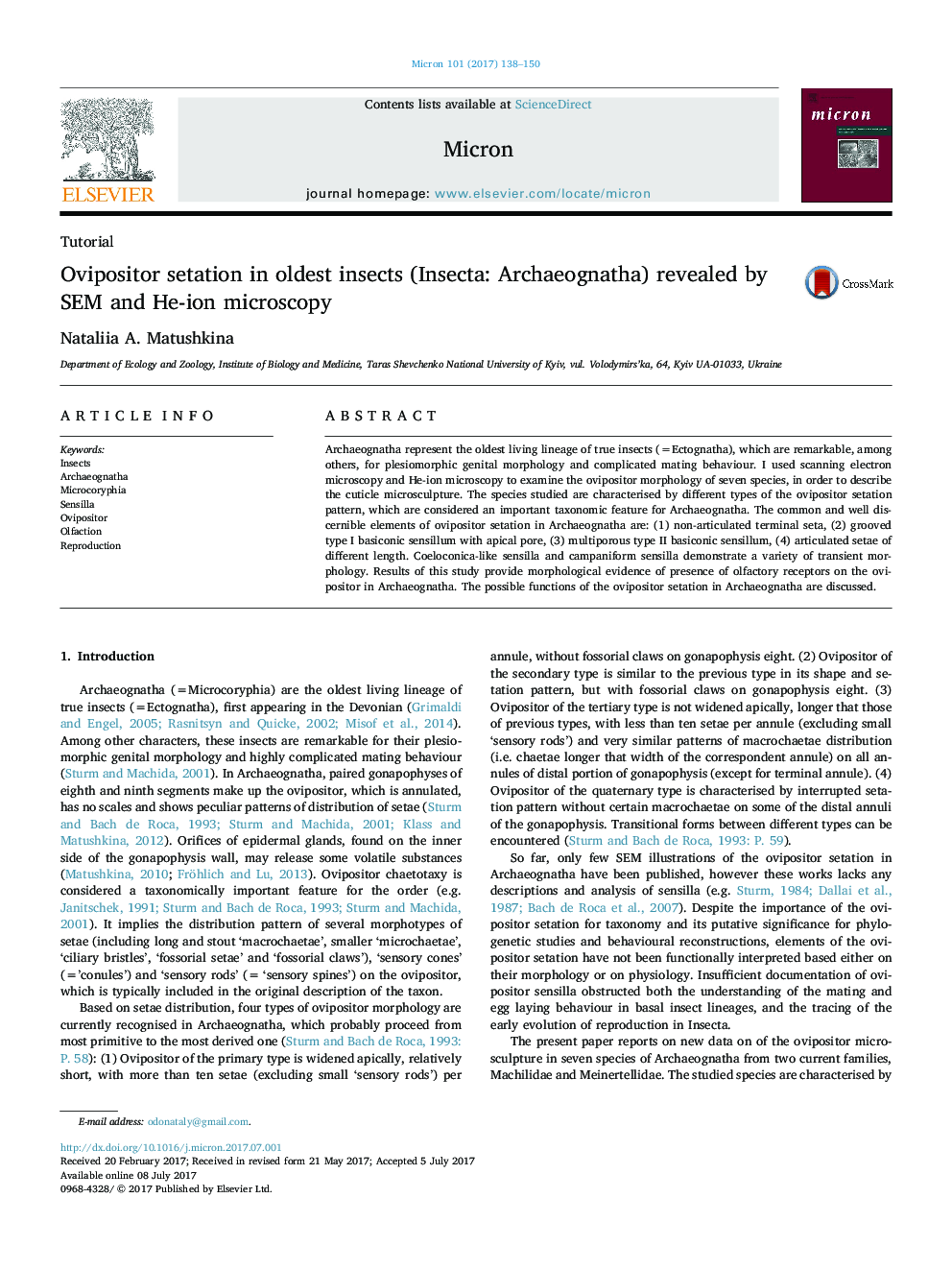| Article ID | Journal | Published Year | Pages | File Type |
|---|---|---|---|---|
| 5456955 | Micron | 2017 | 13 Pages |
Abstract
Archaeognatha represent the oldest living lineage of true insects (=Ectognatha), which are remarkable, among others, for plesiomorphic genital morphology and complicated mating behaviour. I used scanning electron microscopy and He-ion microscopy to examine the ovipositor morphology of seven species, in order to describe the cuticle microsculpture. The species studied are characterised by different types of the ovipositor setation pattern, which are considered an important taxonomic feature for Archaeognatha. The common and well discernible elements of ovipositor setation in Archaeognatha are: (1) non-articulated terminal seta, (2) grooved type I basiconic sensillum with apical pore, (3) multiporous type II basiconic sensillum, (4) articulated setae of different length. Coeloconica-like sensilla and campaniform sensilla demonstrate a variety of transient morphology. Results of this study provide morphological evidence of presence of olfactory receptors on the ovipositor in Archaeognatha. The possible functions of the ovipositor setation in Archaeognatha are discussed.
Related Topics
Physical Sciences and Engineering
Materials Science
Materials Science (General)
Authors
Nataliia A. Matushkina,
